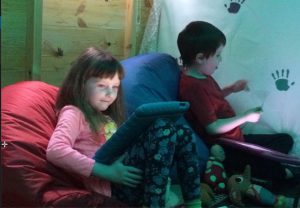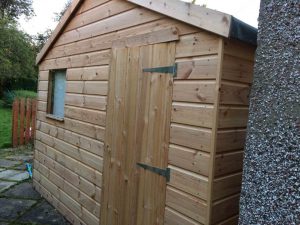Turning a Simple Shed Into a Sensory Sanctuary
 Most parents buy their children clothes, toys and other essential items, and use their garden space for barbecues, swings and kicking a ball about. However, I am an autism parent and that makes me think quite differently at times. Both of my children have significant sensory needs. My son has other complex medical needs and his twin sister has crippling anxiety. Helping them has become a matter of priority for me.
Most parents buy their children clothes, toys and other essential items, and use their garden space for barbecues, swings and kicking a ball about. However, I am an autism parent and that makes me think quite differently at times. Both of my children have significant sensory needs. My son has other complex medical needs and his twin sister has crippling anxiety. Helping them has become a matter of priority for me.
My non-verbal son really needed a safe place to go to help calm down from all the stress of trying to communicate and coping with his need to control his environment. His sister needed a personal space where she could escape from all of the social pressure she is under every day at school, and where her anxiety could diminish.
We had no spare rooms available in the house and, as the property is rented, building an extension was not a possibility.
So I looked to the garden.
 I took the twins to some sensory rooms and watched to see what things they enjoyed best. I had our occupational therapist carry out a sensory assessment on them both and then suggest some equipment that might help them.
I took the twins to some sensory rooms and watched to see what things they enjoyed best. I had our occupational therapist carry out a sensory assessment on them both and then suggest some equipment that might help them.
We then set about fundraising and contacting some charities to see if anyone could help us.
We asked a local shed-building company to give us a quote. They custom-built a shed to fit neatly behind our garage and erected it all for us. Then, we had a local flooring company come and floor it for us.
We bought a basic blackout blind locally, as well as some cushions and a blanket. The most expensive piece of specialist equipment we ordered was something called a sound wall. This is a wall with coloured handprints that respond to touch with eight programmable levels for different sound effects. My non-verbal son has vision impairment, so the bright colours and instant feedback of sound were perfect for him.
We also ordered a plinth and a bubble tube and colour-changing lights that have a remote control that the children can use. Finally, we added some beanbags, cushions and blankets.
So far we have kept it simple, and it is a magical place indeed.
One simple shed has become a sensory sanctuary for both children, giving them a safe space to be alone, in control and away from the demands placed upon them every day. It is their space and, although they are supervised, it is the one place where they can be who they want to be.
What I never, ever, expected to happen though, was that the shed would connect my children in a such a beautiful way. Away from peer pressure, my daughter has been unafraid to just enjoy her severely autistic brother in the way she should. As he presses hands on his wall, she has sung along with the wall to him, danced with him and found props to help him understand the songs. She tells him the colours he is pressing and changes the sounds for him too. It has been absolutely beautiful to watch.
With no television to distract them, no pressure from anyone and no limits, they have found their own wonderful way to connect. Like the simple beauty of seeing each other through the window!
From start to finish, the sensory room cost less than £3,000 to complete. While it’s a lot of money, the result for me has been truly priceless.
Miriam Gwynne
Latest posts by Miriam Gwynne (see all)
- What Is the ‘Best Age’ to Get Diagnosed With Autism? - December 11, 2017
- Autism: It Isn’t Always What You Think It Is - November 14, 2017
- When Your Child’s Obsession Consumes the Whole Family - August 29, 2017



